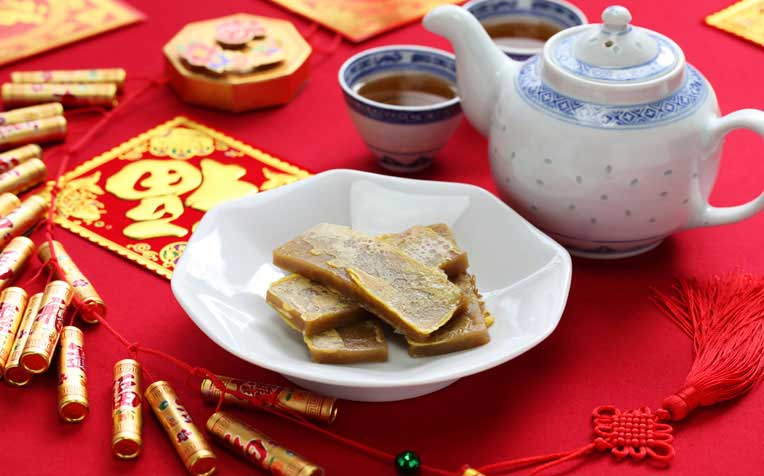
People with diabetes can enjoy sweet festive treats containing carbohydrates and still be able to keep their diabetes under control.
With careful planning, diabetics can enjoy sweet festive desserts and still give the Kitchen God something good to report
“Doctor! I’ve sneaked in two pineapple tarts!” whispered the sprightly octogenarian, as he poked his silver-haired head past the door of my consultation room.
“Here, for you,” Mr L continued in his conspiratorial tone. “My daughter makes so many, but she won’t let me have any. You’ll tell her later that my diabetes is good, otherwise she won’t let me eat any this year. OK, ah? Promise you’ll give me a good report!”
Now I know how the Kitchen God must feel!
It is believed that every year, on the 23rd day of the 12th lunar month, just before the Chinese New Year, the Kitchen God, whose name is Zao Jun, returns to heaven to report the activities of every household over the past year.
As the Jade Emperor would reward or punish a family based on the Kitchen God’s report, families would often smear the lips of Zao Jun’s paper effigy with honey or nian gao (a dessert made from glutinous rice) to sweeten his words or to keep his lips stuck together.
But unlike the Kitchen God, the test we doctors use to evaluate diabetes cannot be bribed with snacks. The HbA1c test gives an overall picture of a patient’s blood glucose level over the past two to three months. It is determined by measuring the percentage of glycated haemoglobin in the blood.
Blood glucose levels in diabetes
When a patient’s diabetes is out of control, the test will find too much glucose in his bloodstream. This extra glucose “links up” (the medical term is “glycates”) with haemoglobin, the oxygen-carrying molecules found in our red blood cells. The greater the level of excess glucose, the more haemoglobin gets glycated.
The amount of A1c in the blood reflects the effectiveness of blood sugar control over the past 120 days, the usual lifespan of a red blood cell. An A1c reading of 6.5 per cent to 7 per cent reflects good diabetes control, while a reading of more than 9 per cent indicates poor control. In the latter case, the diabetes treatment plan must be reviewed.
Mr L’s HbA1c was 7.2 per cent. That was pretty good, given that he was already 82 years old. He was diagnosed with diabetes just a few months earlier, and we wanted to avoid triggering hypoglycaemia (low blood sugar) events. So, we didn’t put Mr L on a very tight diabetes control plan.
I explained the test result to Mr L only to get a groan of dismay. “You mean the test shows my result from the past 120 days? That means I can’t hide. Even what I ate during Christmas would be counted,” he said sadly.
By now, his ever-vigilant daughter had joined us in the room. She said: “Anyway, he shouldn’t eat any bak kwa (barbecued pork) or pineapple tarts right?”
Well, the answer is yes and no. Patients like Mr L used to be told that all sugary foods were off limits. Today, we believe patients can substitute small amounts of sugar with food containing carbohydrates and still be able to keep their diabetes under control.
Also, while the type of carbohydrate that patients consume can affect the rate at which their blood glucose levels rise, it’s the total amount of carbohydrates they eat that has a greater effect.
It will help, too, if patients actively monitor their blood sugar levels with a glucometer.
Counting still matters
Still, none of this means that Mr L could gorge on all the starch and sugar he wanted. Many Chinese New Year goodies contain a large amount of carbohydrates and sugar, even in very small servings.
One slice of bak kwa contains as much as 230 calories. One pineapple tart contains about 30g of carbohydrates and 70 to 80 calories. And let’s be frank: No one ever stops at just one slice of bak kwa or one pineapple tart!
Working with a dietitian, I planned some meals and food choices for Mr L. His daughter, who would be doing most of the festive cooking, helped to decide which sugar substitutes to use, along with the spices and flavourings she could include to reduce the amount of salt.
After calculating the amount of carbohydrates in a bowl of his favourite orh nee, a Teochew dessert made from yam and pumpkin paste, Mr L said: “I think I’ll reserve that for my 85th birthday, in three years’ time!”
He had a point. Saving sweets for a special occasion is a healthy way to enjoy a treat, and a great motivation for patients to focus on nutrient-dense foods such as vegetables, beans, whole grains, fruits, non-fat dairy, fish and lean meat.
Most of us are familiar with the concept of “informed consent”. When patients are scheduled for an operation, doctors have to explain the procedure, the risks and its benefits. Perhaps it’s time to consider getting “informed consumption”. That’s something for the Kitchen God to think about as he enjoys his annual portion of nian gao.
This article was first published in The Straits Times’ Mind Your Body section on Feb 1, 2011. Dr Goh Su-Yen is a Senior Consultant and Head of the Department of Endocrinology, Singapore General Hospital (SGH), a member of the SingHealth group.
Ref. U11
Contributed by


















 Get it on Google Play
Get it on Google Play